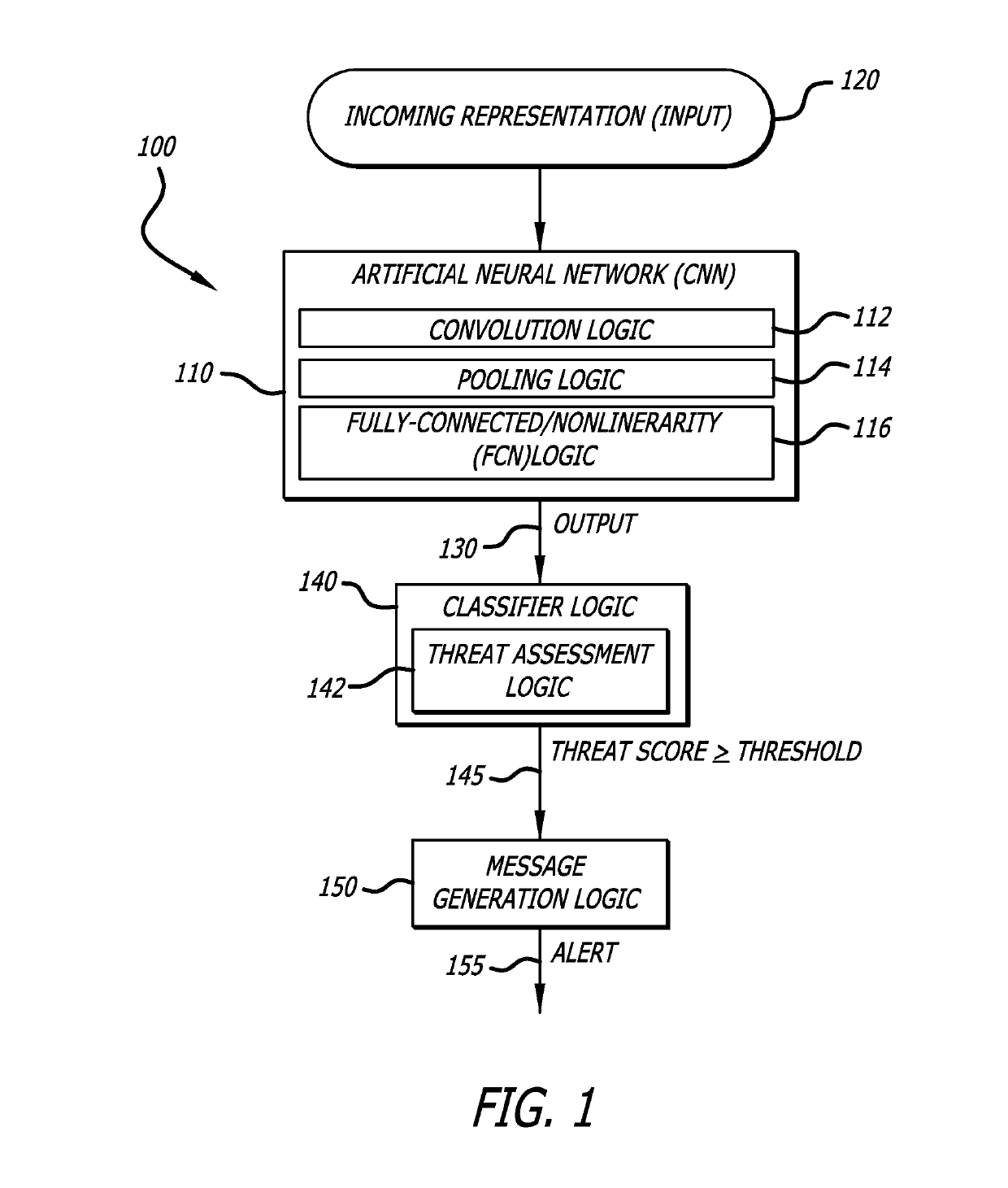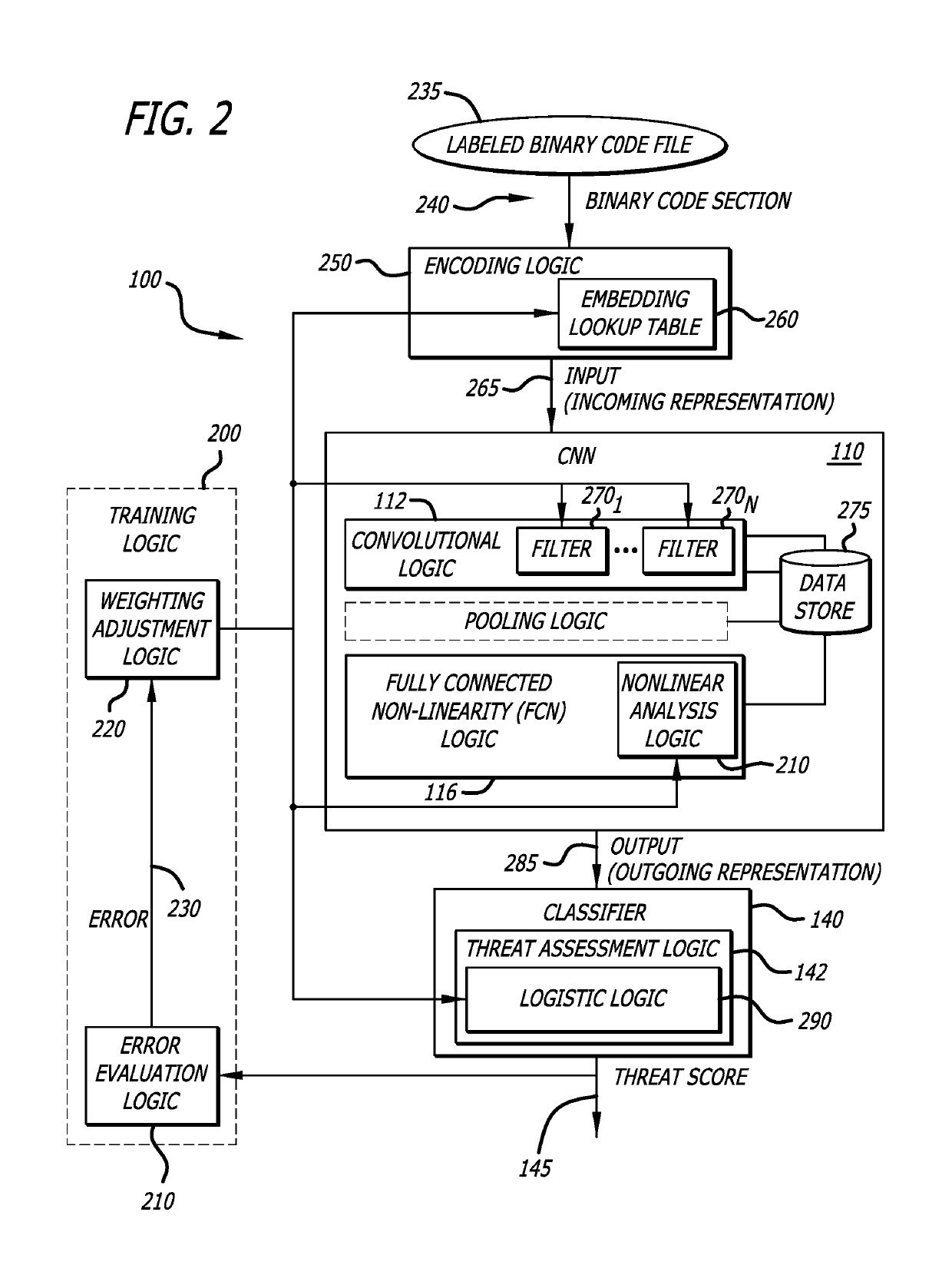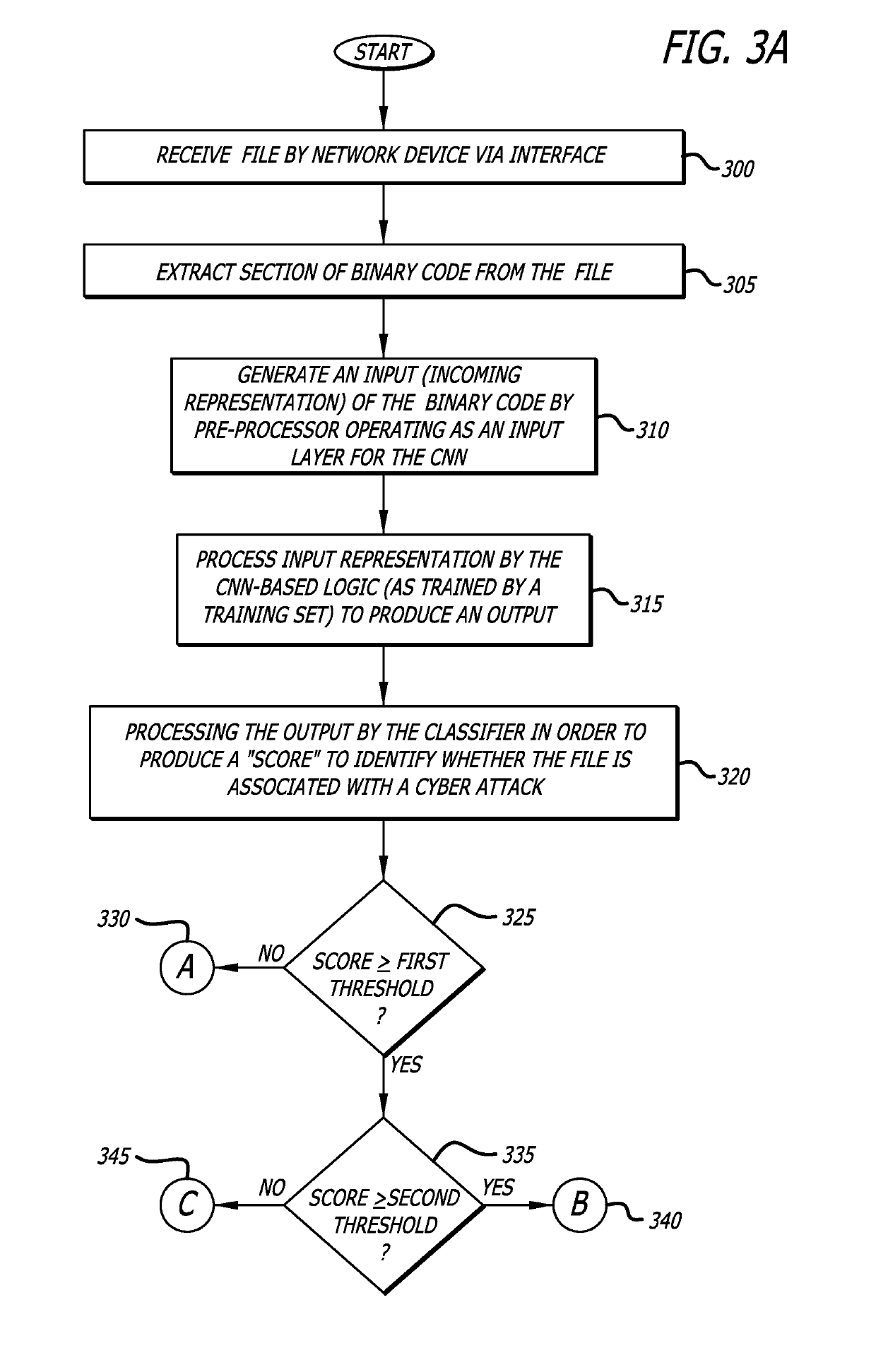System and method for analyzing binary code for malware classification using artificial neural network techniques
a technology of artificial neural network and binary code, applied in the field of cyber security, can solve the problems of adversely affecting or attacking the normal operation of the targeted network device, and increasing the difficulty of detection of new (“zero-day”) or polymorphic malwar
- Summary
- Abstract
- Description
- Claims
- Application Information
AI Technical Summary
Benefits of technology
Problems solved by technology
Method used
Image
Examples
Embodiment Construction
[0016]Embodiments of subsystems and methods of a cyber-security system configured to determine whether an object is associated with a cyber-attack (i.e., malicious). One embodiment of the cyber-security system can be used to analyze raw, binary code of the executable file for malware. According to one embodiment of the disclosure, binary code of an incoming object (e.g., an executable file) undergoes feed-forward processing by a convolutional neural network (CNN), trained using supervised learning, to isolate features associated with the binary code that aid in the classification of the executable file as benign or malicious. Significantly, the binary code can be processed in this manner directly, without intermediate analysis or translation. To provide a more robust analysis, CNN-based and intelligence-driven analyses may be performed concurrently (i.e., overlapping at least partially in time), as described below. It is contemplated that other embodiments of the cyber-security syst...
PUM
 Login to View More
Login to View More Abstract
Description
Claims
Application Information
 Login to View More
Login to View More - R&D
- Intellectual Property
- Life Sciences
- Materials
- Tech Scout
- Unparalleled Data Quality
- Higher Quality Content
- 60% Fewer Hallucinations
Browse by: Latest US Patents, China's latest patents, Technical Efficacy Thesaurus, Application Domain, Technology Topic, Popular Technical Reports.
© 2025 PatSnap. All rights reserved.Legal|Privacy policy|Modern Slavery Act Transparency Statement|Sitemap|About US| Contact US: help@patsnap.com



